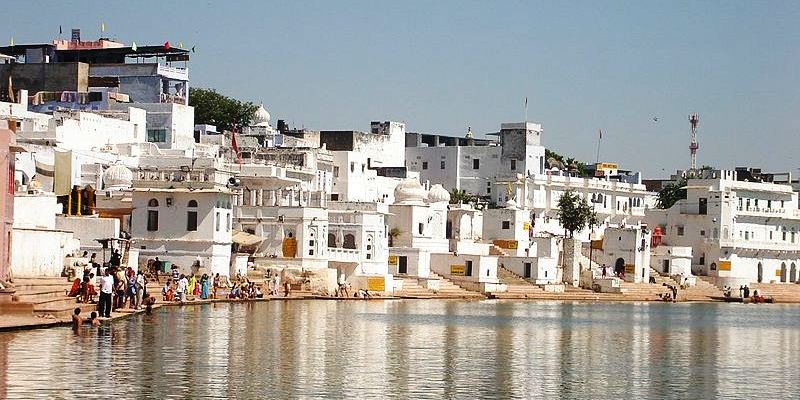
Pushkar, a small town in Rajasthan, is one of India’s oldest and most sacred cities, with a history that dates back thousands of years. Nestled around the holy Pushkar Lake and surrounded by the scenic Aravalli Hills, Pushkar is a unique blend of religious significance, mythological tales, and cultural heritage. Known as the “Tirtha-Raj” (the king of pilgrimage sites), Pushkar holds a unique place in Hindu tradition and is renowned for its timeless aura and serene landscapes.
Mythological Origins of Pushkar
According to Hindu mythology, the story of Pushkar’s origin is tied to the god Brahma, the creator in the Hindu trinity. It is believed that Brahma was searching for a place to perform a Yajna (sacrificial ritual) and decided on Pushkar. When a lotus flower fell from his hand, it created the Pushkar Lake, and the town was born around this sacred water body. The name “Pushkar” itself is derived from “Pushpa” (flower) and “Kar” (hand), symbolizing the flower that Brahma dropped.
To honor the creation, Brahma is said to have built a temple on the banks of Pushkar Lake. The Brahma Temple in Pushkar is one of the very few temples dedicated to him in the entire world, and the town is considered his only worship site. The lake and the surrounding 52 ghats (bathing steps) are also sacred and attract thousands of pilgrims every year who believe that taking a dip in its waters will cleanse them of sins and grant them spiritual blessings.
Historical Significance of Pushkar
Pushkar has been a significant settlement since ancient times, flourishing as a center of trade and pilgrimage. It was a strategic town for traders and travelers crossing the Thar Desert, and its popularity grew as a holy site. Several ancient texts, such as the Mahabharata and Ramayana, mention Pushkar, further adding to its mythological and historical importance.
During the Gupta Empire (4th to 6th centuries AD), Pushkar continued to develop as a religious center, and several temples and structures were built. Over the centuries, the town attracted royalty and devotees from all over India, leading to the construction of more temples, ghats, and religious sites.
The Arrival of Mughal Influence
Pushkar faced challenges during the Mughal period. Emperor Aurangzeb reportedly ordered the destruction of several temples in Pushkar, although many were later rebuilt by devotees. However, one prominent exception to Mughal rule was Akbar the Great, who visited Pushkar and offered donations to the temples. Akbar respected the town’s religious significance, and his contributions helped preserve its heritage during that period.
Pushkar in Modern Times
During the British colonial era, Pushkar’s fame continued to grow, especially due to its annual Pushkar Camel Fair. Originally a gathering for camel and cattle trading, the fair evolved into a cultural event, drawing tourists and traders from around the world. Today, the Pushkar Camel Fair is one of the largest livestock fairs in India and a major tourist attraction, known for its camel races, cultural performances, and traditional Rajasthani displays.
In modern times, Pushkar has become a popular destination for both Indian and international tourists. The town’s tranquil atmosphere, combined with its spiritual significance and scenic beauty, attracts pilgrims, photographers, and travelers seeking peace and insight into traditional Indian culture. Pushkar is also recognized for its vibrant bazaars, bustling with local handicrafts, jewelry, textiles, and souvenirs.
Spiritual and Cultural Legacy of Pushkar
Pushkar remains one of the most revered pilgrimage sites in India. The Brahma Temple is a focal point for Hindu pilgrims, while the Pushkar Lake and its ghats continue to be places of ritual and worship. Every year, on Kartik Purnima (the full moon day in the month of Kartik, usually November), thousands of devotees visit Pushkar to take a holy dip in the lake, which is believed to bring blessings and purification.
Despite its ancient origins, Pushkar has adapted to modernity without losing its charm. The town’s rich history and mythological roots, combined with its enduring cultural celebrations, make it a vibrant symbol of Rajasthan’s heritage and a significant spiritual destination in India. Visit Lohana Resort with family to stay with comfort during your Pushkar visit.
